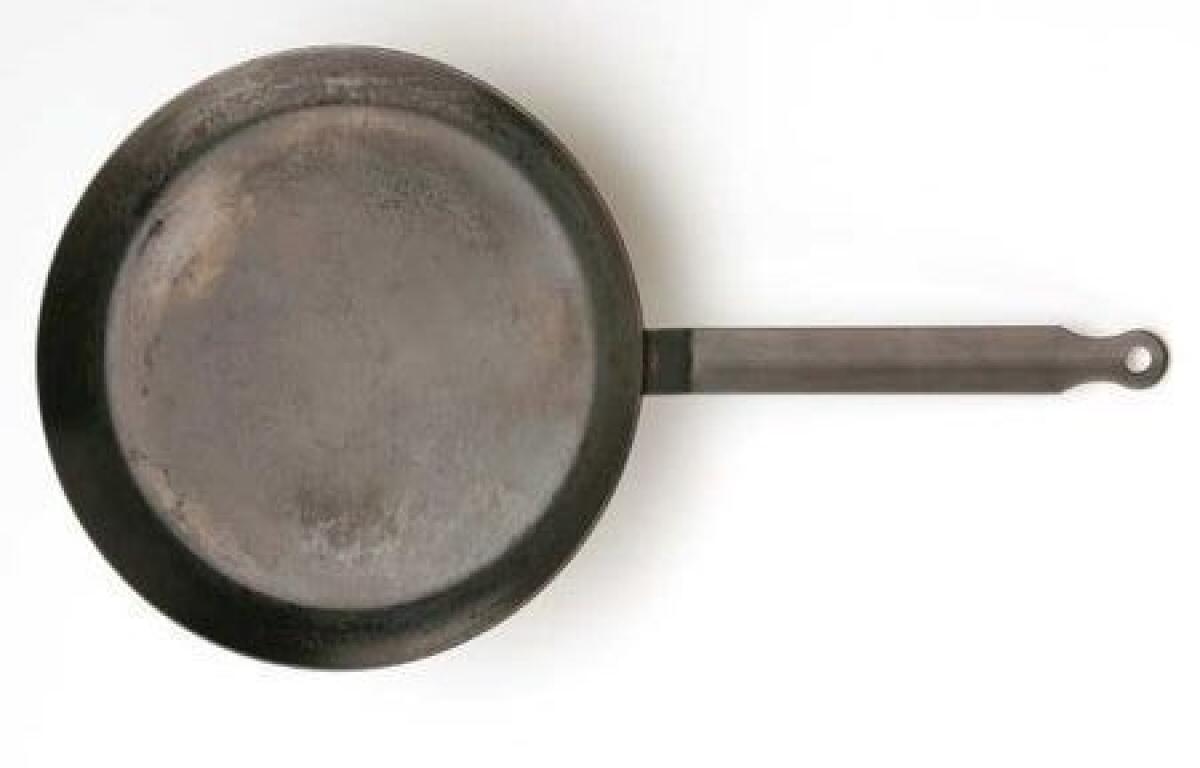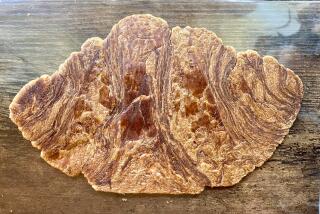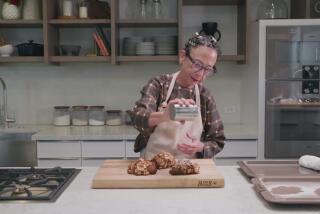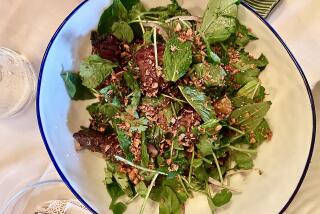Test Kitchen tips: Crepes 101

- Share via
Could it possibly get any better than crepes for breakfast?
French for “pancake,” these delicate creations are made using a very thin batter carefully cooked in a shallow pan. The batter is made ahead of time to fully moisten all of the flour and release any air that may be trapped inside.
Though a frying pan or even a nonstick skillet can be used to make crepes, a specialized crepe pan tends to work best. Shallow and flat-bottomed, these special frying pans are typically made of steel or cast iron. Heat the pan, then pour in the batter, swirling or scraping the batter until it evenly covers the base (use an offset spatula or special scraper). The shallow sides of the pan make it much easier to lift the crepes as they are cooked. Crepe pans can vary widely in price, but a basic one, like the one pictured at left, would set you back about $20. They’re generally available at cooking stores and are widely available online.
For a step-by-step guide to making crepes, check out the photo gallery above. And continue reading below for a basic recipe for sweet crepes, along with a selection of sweet and savory crepe recipe ideas. Imagine, crepes for any time of the day.
If you have any kitchen tips or questions you’d like me to explore, leave a comment below or email me at noelle.carter@latimes.com.
ALSO:
Go behind the scenes at the Test Kitchen
134 recipes for your favorite restaurant dishes
Browse hundreds of recipes from the L.A. Times Test Kitchen
You can find Noelle Carter on Facebook, Google+, Twitter and Pinterest.
Basic sweet crepes
Total time: About 1 hour, plus chilling time
Servings: 18 to 24 crepes
2 cups flour
4 large eggs
1 1/4 cups milk
1/2 teaspoon sea salt
1 tablespoon sugar
4 tablespoons butter, melted
Softened butter for the pan
1. In the jar of a blender, place the flour, eggs, milk, salt, sugar and 4 tablespoons butter with 1 1/4 cups water and blend at high speed until smooth, about 2 minutes, stopping the blender to wipe down the sides with a spatula. Strain the batter through a fine-mesh sieve. Cover and let rest for at least an hour or overnight in the refrigerator.
2. Heat a crepe pan or nonstick sauté pan over medium heat until a few drops of water sizzle when sprinkled on the pan. With a paper towel, spread a little butter on the pan, being sure to wipe most of it off.
3. Using a bowl or a measuring cup with a spout, pour enough batter to just cover the pan (for a crepe pan, a little less than one-fourth cup), immediately swirl the batter around until it covers the whole surface. If the batter seems too thick and doesn’t spread quickly, add up to an additional one-fourth cup of water to the mixture and stir until blended. Adjust the heat if necessary. If the batter sizzles when you pour it onto the pan, it’s too hot; if it just lies there, it’s too cold. As with pancakes, the first one or two crepes are usually experiments.
4. When the edges of the crepe begin to turn golden and move away from the pan, after about 2 minutes, lift up the edge nearest to you using a spatula (an offset spatula works best). Flip the crepe over. Cook the second side of the crepe only long enough for it to set, less than a minute. Remove from the pan and start a stack of crepes, layering wax paper between each crepe as you cook more. Add more butter when needed with a paper towel.
Each of 24 crepes: 77 calories; 3 grams protein; 9 grams carbohydrates; 0 fiber; 3 grams fat; 2 grams saturated fat; 42 mg. cholesterol; 65 mg. sodium.
Sweet and savory crepe recipes:
German chocolate cake as crepes
Galettes filled with shrimp and scallops
Chive crepes stuffed with mushrooms and ham
Banana crepes with Nutella from Savannah in Burbank
More to Read
Eat your way across L.A.
Get our weekly Tasting Notes newsletter for reviews, news and more.
You may occasionally receive promotional content from the Los Angeles Times.







